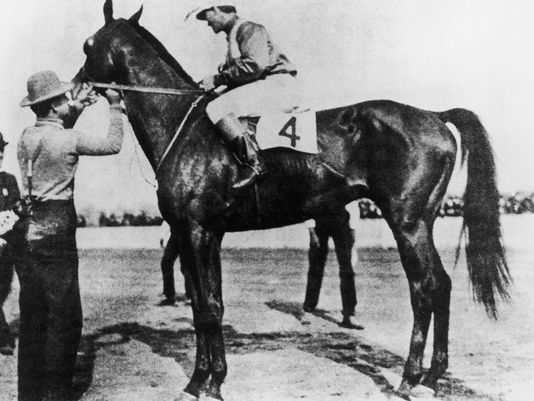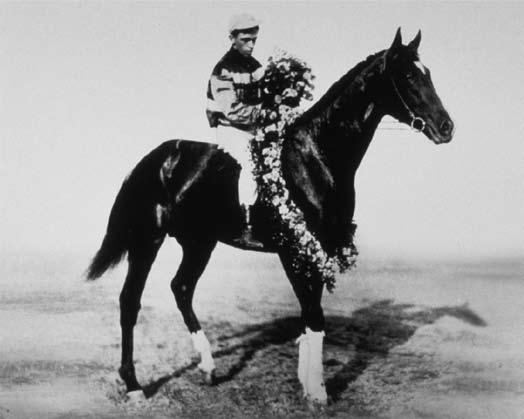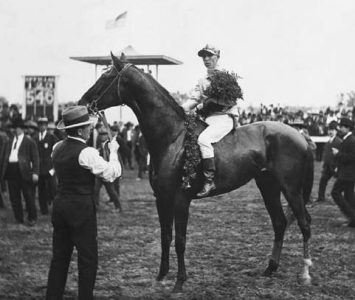I was looking at photos of early 1900s Kentucky Derby winners the other day and it jumped off the screen at me.
Check out the photos below of the Derby winners from 1904 (Elwood), 1906 (Sir Huron) and 1910 (Donau):

Elwood

Donau

Sir Huron
It doesn’t take an equine expert to see there is a stark difference, physically, between these turn-of-the-century race horses compared to today’s race horses — most notably, in the hindquarters, where the early Derby winners appear to be very lean.
With Justify’s most recent left-ankle swelling that has sidelined him from training, it prompts the question: Is Justify carrying too much weight? Although trainer Bob Baffert admitted several years ago that he allowed Dortmund to get too big (close to 1,400 pounds), this is not intended to be a criticism. Baffert is a respected and excellent trainer. However, the question of acceptable body-fat percentage for today’s racing thoroughbreds may need to be scrutinized.
I have heard complaints that today’s thoroughbred breeders breed too much for speed and not enough for durability. As a consequence, we see more breakdowns on the track, more sidelining injuries and early retirements than we did years ago.
Americans have gotten taller over the past 100 years, a credit to better nutrition. Same goes for American thoroughbreds. They were typically about 15 hands (60 inches) tall around the turn of the 20th Century. Now, the average is 16.1 hands (65 inches).
But Americans have gotten heavier as well. Have attitudes toward optimal and acceptable body-fat percentages for race horses changed over time as well? Let’s face it: it’s easy to overfeed animals. I have a miniature pinscher that is quite crafty at working everyone for extra treats.
I am not an equine veterinary expert, but clearly added weight increases the stress on joints. This applies to humans, dogs, horses, etc. Being at optimal weight is even more important for athletes, who will put more stress and strain on these joints.
I wasn’t able to find specific information on the heights and weights of the above early Kentucky Derby winners, but I was able to uncover this information for the prominent horses listed below:
- Man o’War (1920) Height: 16.2 hands (66 in), Weight: 1,125 pounds
- Seabiscuit (1936) Height: 15.2 hands (62 in), Weight: 1,040 pounds
- War Admiral (1937) Height: 15.3 hands (63 in), Weight: 960 pounds
- Assault (1946) Height: 15.2 hands (62 in), Weight: Less than 1,000 pounds
- Secretariat (1973) Height: 16.2 hands (66 in), Weight: 1,199 pounds
- Seattle Slew (1977) Height: 16.0 hands (64 in), Weight: 1,120 pounds
- Affirmed (1978) Height: 16.1 hands (65 in), Weight: 1,000 pounds
- American Pharaoh (2015) Height: 16.1 (65 in) hands, Weight: 1,170
- Justify (2018) Height: 16.3 (67 in) hands, Weight: 1,268-1,380 pounds?
Justify’s weight was recorded as 1,050 pounds in August 2016, a month before the Keeneland Yearling Sale. His weight was reported as 1,268 pounds during the NBC Preakness Stakes telecast, but other sources claim his weight to be 1,380 pounds.
I don’t know which figure is correct. Perhaps only Bob Baffert knows Justify’s true weight. But even if Justify is 1,268 pounds, that’s heavier than Man o’War, who was one inch shorter and weighed 143 pounds less.
Perhaps more research and focus into equine nutrition is warranted in the future.

Michael is a pharmacist by profession, author of “Masten Gregory: Totally Fearless” as well as a horse racing blog that can be found at: www.thederbyhandicapper.com. He attributes his love for horse racing to two things: his grandfather who used to listen to horse races on the radio broadcasted from the now defunct Ak-Sar-Ben race track in Omaha, Nebraska and a Sports Illustrated subscription in the 1970s.


